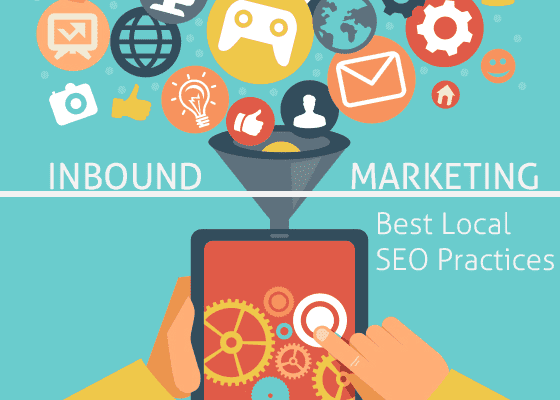Inbound marketing has grown dramatically over the past several years, partly due to consumer burnout on paid advertising. You can improve your local inbound marketing effectiveness by utilizing these free and paid tools.
Google AdWords
Google AdWords is considered outbound marketing, but you can incorporate inbound marketing principles with it.
- Blog post title: Drive blog post traffic with AdWords using keywords from the post itself. Keyword rich content and heading tags will improve both page and overall site SEO for when crawlers are searching your site.
- Landing page relevancy: Ensure your landing page copy matches your AdWords copy and the customer’s intent. If you are a local clothing boutique looking to drive sales on a new jacket that you are promoting, the landing page that the user is brought to when they click should take them directly to that product page, the easier you make it for someone to convert, the more likely a conversion will occur.
- Call to action specificity: Use specific, action-oriented copy for calls to action to improve click-through rates. The copy that you use for the ad should be relevant, eye catching and the messaging should clearly be conveyed.
Facebook Ads
Like Google AdWords, Facebook advertising is usually considered outbound marketing. Here is how to make it inbound:
- Top of funnel: Use key content to generate top of the funnel leads. Facebook allows very fine-grained selection of your target market. Use that advantage to drive the right prospects to your best content.
- Content in the ad itself: Don’t be afraid to provide lots of educational content in the ad itself. This is especially important because Facebook is now separating metrics for link clicks from engagement clicks.
Bing Ads
Bing Ads is similar to Google AdWords; keep these considerations in mind.
- Wealthy audience: According to the Bing’s user stats, people who use Bing as a search engine spend 24 percent more than searchers on Google.
- Location profiles: Determine which segment of your local audience would be attracted to different pieces of content on your site, and create ad text that specifically targets those searchers.
Google Analytics
Google Analytics offers powerful website data for free. Here are the key things to track for inbound marketing purposes.
- Social conversions: What percent of your traffic is coming in from content or advertising you placed on social media sites such as Facebook?
- Acquisition overview: This report shows how many searchers came to your site and from where. It will help you further develop your inbound strategy to identify what channels are converting the best, where to potentially allocate an advertising budget, and further give insight into the demographics of the users that are engaging with your website, specific pages, and content that resonates with them.
Conversion Tracking
Ultimately, your marketing has to lead to conversions. You should measure these statistics.
- Actual sales: How many inbound searchers purchased your product or service?
- Lead generation: Track how many people signed up to receive your newsletter or lead generation device, such as a newsletter or free download.
- Additional content: Your main goal may be to make sure searchers click to additional content on your site after consuming the material on your landing page.
Inbound marketing is a key aspect of your local SEO marketing strategies and tactics. Use these tools to make it even more effective, profitable and productive. Now you have a one-two punch that will help grow your audience, increase sales and boost profits.
Schedule a demo with one of our ad specialists and see how MatchCraft’s Advantage Platform can improve your local inbound strategy today!
